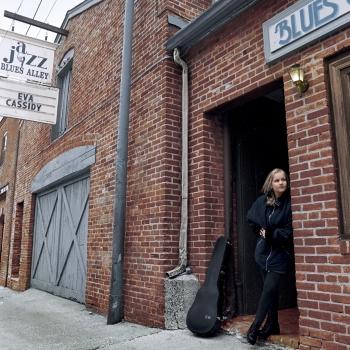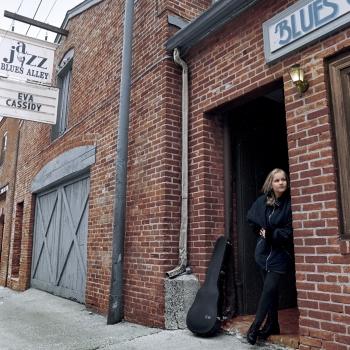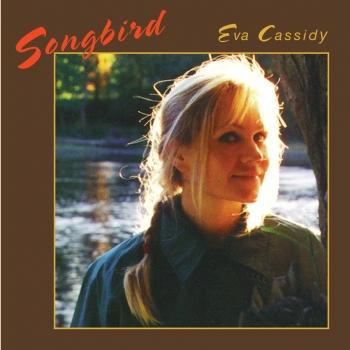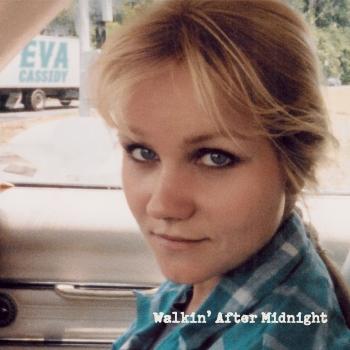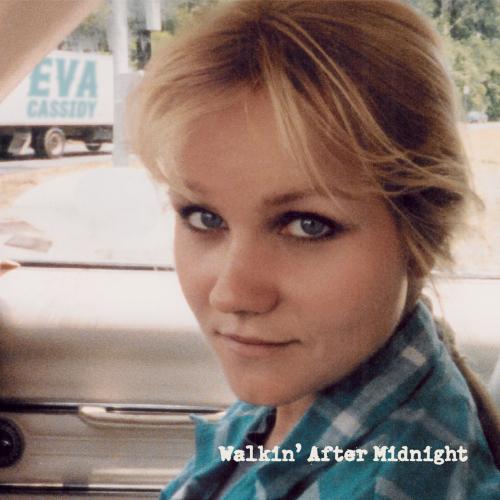
Walkin' After Midnight Eva Cassidy
Album info
Album-Release:
2024
HRA-Release:
06.09.2024
Album including Album cover
I`m sorry!
Dear HIGHRESAUDIO Visitor,
due to territorial constraints and also different releases dates in each country you currently can`t purchase this album. We are updating our release dates twice a week. So, please feel free to check from time-to-time, if the album is available for your country.
We suggest, that you bookmark the album and use our Short List function.
Thank you for your understanding and patience.
Yours sincerely, HIGHRESAUDIO
- 1 Walkin' After Midnight (Walkin' After Midnight) 02:44
- 2 Blue Skies (Walkin' After Midnight) 02:39
- 3 Next Time You See Me (Walkin' After Midnight) 03:17
- 4 Summertime (Walkin' After Midnight) 03:47
- 5 Honeysuckle Rose (Walkin' After Midnight) 03:10
- 6 Route 66 (Walkin' After Midnight) 03:02
- 7 Ain't No Sunshine (Walkin' After Midnight) 04:06
- 8 Fever (Walkin' After Midnight) 03:54
- 9 Down Home Blues (Walkin' After Midnight) 03:31
- 10 Wade In The Water (Walkin' After Midnight) 03:40
- 11 Cheek To Cheek (Walkin' After Midnight) 04:21
- 12 Won't Be Long (Walkin' After Midnight) 04:03
Info for Walkin' After Midnight
A new Eva Cassidy album, Walkin’ After Midnight, will be released on September 6th. The album has twelve previously-unreleased tracks, which were recorded at the Maryland Inn’s King of France Tavern in Annapolis in 1995. Alternative renditions of most of these songs have appeared on previous albums, but these new ones have a different western swing sound.
Since her untimely passing in 1996 from melanoma at the age of 33, singer Eva Cassidy has earned critical acclaim and an international following for her interpretive skills, selling some 12 million records in the process. WALKIN' AFTER MIDNIGHT, a new collection comprised of 12 never-before-released live tracks, showcases her versatile voice and sometimes familiar repertoire in a whole new light.
Eva Cassidy connoisseurs will recognize the bulk of the song selection—only “Down Home Blues” has never appeared on a previous Cassidy collection—but the approach is refreshingly different as symphony violinist Nasta transforms into a fiddle player for the night and Cassidy’s extraordinary voice fills the spaces left by the missing instruments. Rock guitarist Grimes responds with a lighter touch to his playing. Known for her wide-ranging, but unerringly tasteful, sense of material, Cassidy brings a cohesive western swing feel to WALKIN’ AFTER MIDNIGHT’s classic set list, including “Fever,” “Summertime,” “Route 66” and “Cheek to Cheek,” as if she planned it that way.
It would be two months after the Maryland Inn show that Cassidy and her band would record the set at the Blues Alley nightclub in Washington, DC that would largely define her posthumous career. One year to the day after the Maryland Inn appearance, she would be gone.
Thankfully, Eva’s bassist and producer Chris Biondo plugged a DAT recorder into the venue’s PA system, capturing the full concert, which took place a year to the day before Eva died, aged 33, from cancer. It was also two months before the Blues Alley concert which became the foundation of the shy singer’s posthumous fame. Beloved across the world, Eva’s music also found fans among her musical peers from Adele, Elton John and Ozzy Osborne to Sting, Paul Simon and Paul McCartney.
None of Walkin’ After Midnight’s dozen recordings – among them the Patsy Cline title track, ‘Fever’, ‘Ain’t No Sunshine’ and ‘Summertime’, plus Eva’s only ever recording of the ZZ Hill song ‘Down Home Blues’ – has ever been released before. The Western Swing tag, a reference to the 1920s country music subgenre played primarily on stringed instruments, comes from a description doodled on her label’s track list.
Having misplaced two musicians that night, Eva invited her friend Bruno Nasta, a classical, jazz and rock violinist from Baltimore, to guest at the gig. Eva played her acoustic, Chris was on bass and Keith Grimes on electric guitar.
Proving the old adage that less can be more, the combo created a serendipitous, alternate context for some of Eva’s most popular repertoire. Dancing in the space opened up by the absence of additional musicians, Eva’s vocals are as joyous and free as any previously heard and perhaps the most playful of her cruelly cut-short career.
Brilliantly, Bruno morphs from a symphony violinist into a fiddle player who brightens the sound. Keith responds with a lighter touch as befitting a Western Swing band.
Eva Cassidy, vocals, guitar
Keith Grimes, guitar
Chris Biondo, bass
Bruno Nasta, fiddle
Eva Cassidy
Eva Marie Cassidy (February 2, 1963 in Washington, DC – November 2, 1996 in Bowie, Maryland) was an American vocalist described by the British newspaper The Guardian as “one of the greatest voices of her generation.” She had a diverse repertoire of jazz, blues, folk, gospel and pop. Cassidy remained virtually unknown outside of her native Washington, DC, when she died of melanoma (which had spread to her bones) in 1996. Her posthumously released recordings have since sold in excess of 12 million copies, and in early 2001 the compilation album Songbird reached #1 on the UK album charts.
Eva Cassidy was the third of four children born to Hugh and Barbara Cassidy. From an early age, she displayed artistic and musical talent. When she was nine years old, her father taught her to play the guitar, and she began to play and sing at family gatherings.
While a student at Bowie High School, she did sing with a local band, called Stonehenge, and received considerable praise.
At the age of eighteen, Cassidy began her professional career, singing and playing guitar in a Washington, D.C., area band, called Easy Street. This band performed in a variety of styles, at weddings, corporate parties, and pubs.
During the summer of 1983, Cassidy sang and played guitar, six days per week, at Wild World, in Maryland. Her brother Dan was also a member of this working band.
Throughout the 1980s, Cassidy worked with a number of other bands, including the soul and Motown-oriented band The Honeybees, and the techno-pop band Characters Without Names, later called Method Actor.
During this period, Cassidy also worked as a propagator at a plant nursery and as a furniture painter in Annapolis, Maryland. In 1986, she met (bassist and recording engineer) Chris Biondo, who encouraged her and helped her find work as a backup singer for various acts. In 1990, Biondo and Cassidy hired the so-called “Eva Cassidy Band”, composed of Chris Biondo, Lenny Williams, Keith Grimes and Raice McLeod, and she began to perform frequently in the Washington area.
In 1992, Biondo played a tape of Cassidy’s voice for Chuck Brown. Best known as the “Godfather of Go-go”, Brown is also a jazz and blues vocalist. This led to the first commercial recording of Cassidy, the duet album with Chuck Brown, The Other Side; which featured performances of classic songs such as “Fever”, Billie Holiday’s “God Bless the Child” and Cassidy’s signature tune “Over the Rainbow”. The album was released and distributed by Liaison Records, the label that also released Brown’s Go-go albums. The duet CD attracted the attention of various record companies, but the offers all required Cassidy to pigeonhole herself within a single style (e.g., pop or jazz), something she adamantly refused to do.
In 1993 Eva Cassidy was first honored by the Washington area music community when she was awarded two Wammie awards for “Female Vocalist Roots /Traditional R&B” and “Vocalist Jazz/Traditional.” The next year she was chosen to perform for the awards ceremony.
In January 1996, Cassidy recorded the album Live at Blues Alley, about which The Washington Post later commented that “she could sing anything and make it sound like the only music that mattered”. Cassidy was unhappy with her singing on the album, because she had a bad cold on the night of the recording; she began recording a studio album which was eventually released as Eva by Heart posthumously in 1997.
During a promotional event for the Live at Blues Alley CD in July 1996, Cassidy noticed an ache in her hips, which she attributed to stiffness from painting murals. The pain persisted, and, a few weeks later, Cassidy was diagnosed with melanoma. By the time of her diagnosis, the cancer had spread throughout her body. Cassidy’s health rapidly deteriorated, and her final performance was in September 1996. At the performance, she had used a walker to reach the stage, sang “What a Wonderful World” in front of an audience of friends, and was subsequently admitted to Johns Hopkins Hospital.
Eva Cassidy died on November 2, 1996, at the age of 33. She was posthumously inducted into the Hall of Fame of the Washington Area Music Association.
This album contains no booklet.









